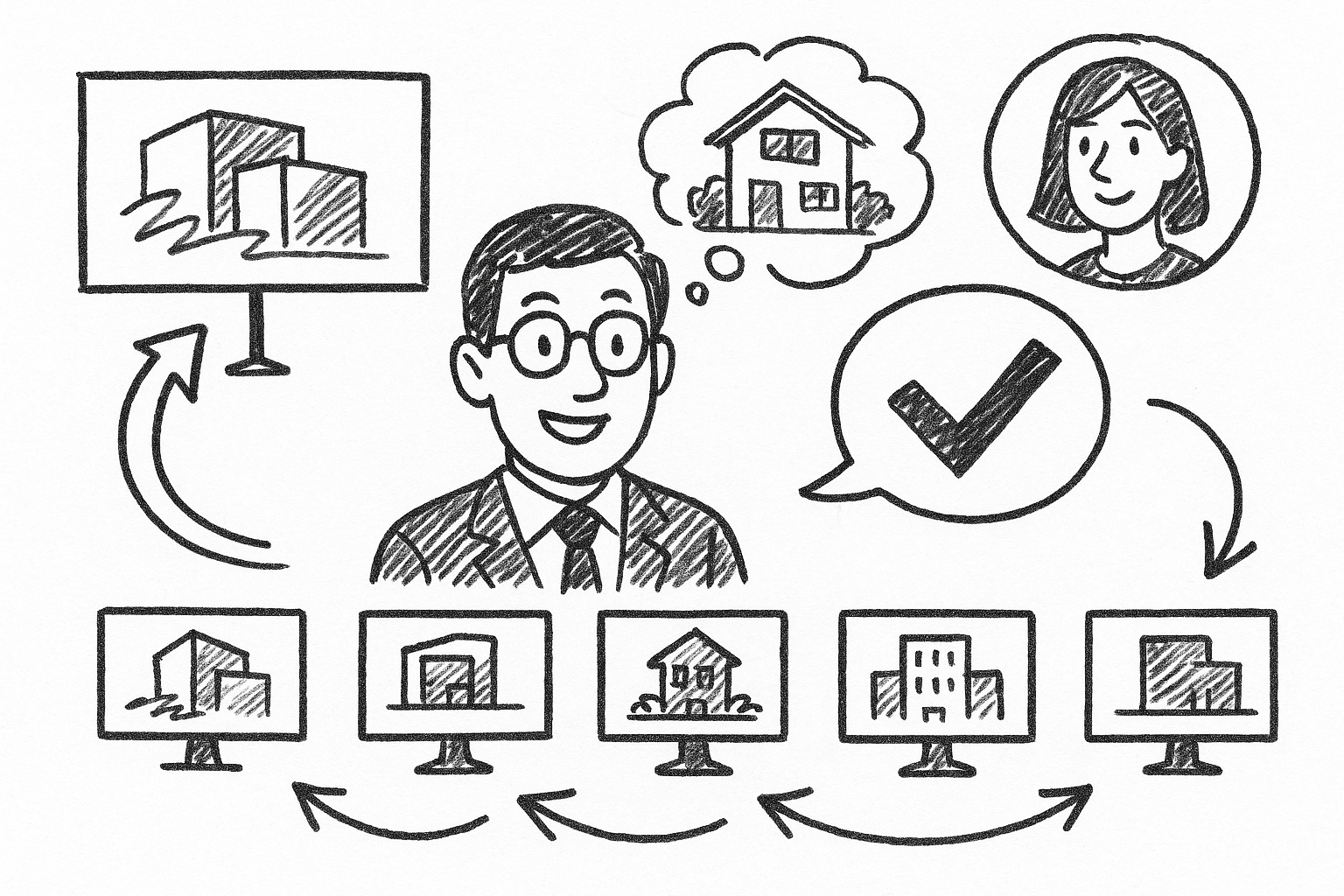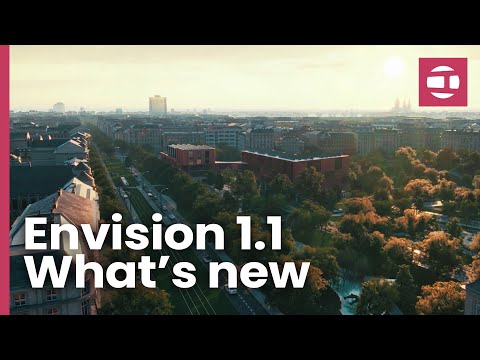Your Cart is Empty
Customer Testimonials
-
"Great customer service. The folks at Novedge were super helpful in navigating a somewhat complicated order including software upgrades and serial numbers in various stages of inactivity. They were friendly and helpful throughout the process.."
Ruben Ruckmark
"Quick & very helpful. We have been using Novedge for years and are very happy with their quick service when we need to make a purchase and excellent support resolving any issues."
Will Woodson
"Scott is the best. He reminds me about subscriptions dates, guides me in the correct direction for updates. He always responds promptly to me. He is literally the reason I continue to work with Novedge and will do so in the future."
Edward Mchugh
"Calvin Lok is “the man”. After my purchase of Sketchup 2021, he called me and provided step-by-step instructions to ease me through difficulties I was having with the setup of my new software."
Mike Borzage
Unlocking Realism: Mastering Enscape Material Techniques for Visually Convincing Designs
May 29, 2025 5 min read


In Enscape’s live viewport, materials are the decisive factor that elevates an image from technically correct to viscerally believable. Geometry communicates form, lighting sets the mood, yet it is the subtle dance of reflectance, translucency, and microscopic relief that convinces the eye it is seeing an actual building, product, or landscape. The following guidance distills years of iterative workflows into five production-proven practices that balance realism, performance, and speed of revision.
Build on Physically-Based Rendering (PBR) Fundamentals
Every convincing Enscape material begins with the disciplined application of Physically-Based Rendering theory. The workflow is deceptively simple—four well-authored bitmaps inform almost every optical characteristic humans can perceive.
- Albedo governs diffuse color and must remain energy-conserving; an 8-bit value of 40–240 avoids the non-existent extremes of pure black or white.
- Roughness sculpts highlight spread. Source it from studio photographs of real samples or process Specular imagery through Substance/Quixel converter nodes to sidestep the “glossy plastic” look that plagues generic libraries.
- Normal maps impart micro-relief without altering silhouette. Author them at true physical scale—fiberglass weave at 0.3 mm, concrete pores at 1 mm—and confirm proportion with a one-meter calibration cube placed in scene.
- Metallic toggles conductive behavior. A value of 1 triggers colored reflections for copper or brass, while 0 keeps dielectric materials such as wood and marble energy-consistent.
Texture bit-depth merits equal attention. Whenever the height component drives critical light interaction—stucco ridges, hammered metal, terrazzo chips—save the map as 16-bit PNG or TIF. This preserves the intermediate gray values HDR lighting exposes, preventing posterization in sunlit façades or spotlight sweeps.
Finally, calibrate world scale early. A brick bond mapped at 197 mm instead of 215 mm will look subtly “wrong” even to untrained viewers. Keep a dedicated reference cube rendered next to your working camera to catch such proportional inaccuracies before final export.
Optimize Normal & Height Maps for Depth without Dragging FPS
Visual richness must never sabotage the fluid navigation that sells a design to stakeholders. Therefore, reserve height/displacement mapping for focal surfaces inspected at arm’s length—lobby feature walls, countertop edges in a kitchen configurator, or hero products on a turntable. Everywhere else, rely on normal maps for their exceptional cost-to-quality ratio.
Where GPU memory is scarce, convert existing Height data to Normal through Materialize or similar free utilities. Doing so collapses the information into three color channels and eliminates an additional texture fetch, shaving milliseconds off frame time without perceptible loss beyond extreme raking angles.
Amplitude discipline matters. Enscape does not simulate self-shadowing within a normal map, so an intensity above 1–1.5 mm manifests as unnatural “micro-mountains.” When in doubt, halve the strength, reload, and re-evaluate under a low-angle directional light to ensure coherence with the global illumination solution.
The mip-map chain is an often forgotten culprit for mid-distance mushiness. Inspect each derivation level in an external viewer: brick edges should remain crisp in Mip 3 and only dissolve at Mip 5. Re-export from your authoring suite with sharpen filters if necessary. Following this regimen maintains engaging texture reads along approach paths without introducing aliasing on far-field architecture.
For genuine displacement, start with the default slider at 0.5; then test on a tethered VR headset. A single step-up in quality can double surface tessellation and halve performance on mobile GPUs. Data-driven thresholds beat visual guesswork every time.
Exploit Enscape Material Keywords for Procedural Magic
Enscape hides several specialized shaders behind slick naming conventions. Suffixed correctly, a material bypasses manual parameter juggling and inherits a purpose-built procedural engine.
Consider these high-impact examples:
- _water transforms any surface into dynamic liquid complete with Fresnel reflection and wave simulation. For architectural pools, keep Wave Height below 0.02 m; fountains benefit from stronger caustics via the dedicated slider.
- _grass spawns blade geometry determined by your Albedo. Swap only the color map to iterate between bent-grass putting greens and bluegrass lawns. Use variation masks authored in Photoshop to combine mown patterns with wild boundaries seamlessly.
- _carpet unlocks anisotropic fiber scattering. Deliver a loop-free Height map derived from fiber photographs, then toggle Subsurface Scattering to taste—plush rugs usually sit around 0.2 SSS, commercial carpet tiles at 0.
- _emissive turns Albedo luminance into physical light. Marry it with a semi-transparent mask to create neon signage without modeling extruded tubes, sidestepping polygon inflation in crowded retail scenes.
- _frosted overlays stochastic micro-normal noise that tamps specular response. Pair it with a Roughness of 0.8–0.9 for shower doors that diffuse privacy while still admitting ample daylight.
The procedural approach condenses what formerly required shader graphs and external plugins into a simple naming syntax, expediting iteration for design teams under aggressive deadlines.
Master Transparency & Refraction for Convincing Glass and Plastics
Nothing signals authenticity quicker than accurate light bending through transparent media. Set the Index of Refraction correctly—1.52 for standard float glass, 1.41 for polycarbonate, 2.42 for diamond desktop sculptures—and watch reflections snap into physically plausible behavior. Enscape defaults to 1.0, effectively air; leaving it unchanged robs windows of depth and weight.
Tinting should not rely solely on Albedo. Transmission Tint allows for wavelength-dependent coloration as rays exit the medium, yielding luscious cranberry reds in art panels or subtle aquamarine edges in low-iron glass balustrades. Adjust both channels in tandem to avoid cartoon saturation.
Enscape offers a Thin Glass toggle intended for single-surface panes in large curtain walls. Activating it on volumetric forms causes double refraction artifacts and unnatural glare. Conversely, neglecting thickness on objects expected to carry mass—whiskey tumblers, acrylic lighting fixtures—prevents proper internal bounce and kills the jewel-like sparkle viewers subconsciously expect.
For privacy glazing, combine high Roughness values (0.7–0.9) with a 4K monochrome micro-normal map. This simulates etched surfaces scattering highlights without resorting to distance-field blurring that ramps up computation cost.
The extra effort of modeling genuine thickness (6–12 mm for architectural glass) pays dividends in daylight studies where global illumination must traverse a façade and illuminate deep interior spaces. Energy consultants will appreciate the improved lux predictions, and the renderings will simply look right.
Use Procedural & UV-Mapping Tricks to Eliminate Repetition
Repetition is the enemy of immersion. Even a flawless texture betrays its CGI origins when tiled across a lobby or terrace without variation. Start by randomizing rotation and offset per instance. Revit Material Instances allow parameter segregation at the family level, while SketchUp provides intuitive right-click texture positioning.
Decals are the fast lane to localized character. Load grime streaks, signage, or paver discoloration directly in the Enscape Material Editor and layer them above the base material. Because decals inherit the parent’s bump and reflectance properties, they integrate seamlessly and can be toggled at will for client preferences.
On irregular topography, triplanar mapping sidesteps UV stretching. Instead of relying on flattened coordinates, it projects the bitmap from three orthogonal axes and blends by surface normal. Cliff faces, terrain cuts, and tree bark instantly benefit without any manual unwrapping.
Importers that carry vertex colors open another creative avenue. Paint masks directly in Blender or 3ds Max, export as FBX, and blend a sandy base with rocky patches through Enscape’s two-material interface. The workflow demands no extra textures yet delivers convincing heterogeneity.
When patterning demands exceed manual labor—think chessboard marble floors or subway mosaics—look to Substance Designer’s Color Variation node. One graph outputs a multi-mask set that drives diffuse, roughness, and height shifts. Within Enscape, plug the masks into the corresponding slots and observe hundreds of unique tiles rendered with a single material definition.
Conclusion
The journey to unmistakably authentic Enscape visuals starts with a disciplined **PBR foundation**, advances through measured **depth optimization**, harnesses **keyword-driven procedural shaders**, perfects **transparent material physics**, and culminates in **repeat-free mapping strategies**. Together these practices anchor a studio-level material library that performs in VR as gracefully as it dazzles on marketing stills.
Codify each success into a reusable asset library. Benchmark every change in real-time and, ideally, in a headset to guarantee interactivity under worst-case loads. The faster you iterate, the sooner you deliver renders that stand out in an increasingly competitive field of architectural and product visualization.
Also in Design News

Mastering Client Perception: Five Enscape Render Styles to Accelerate Design Approval
July 17, 2025 6 min read
Read MoreSubscribe
Sign up to get the latest on sales, new releases and more …




